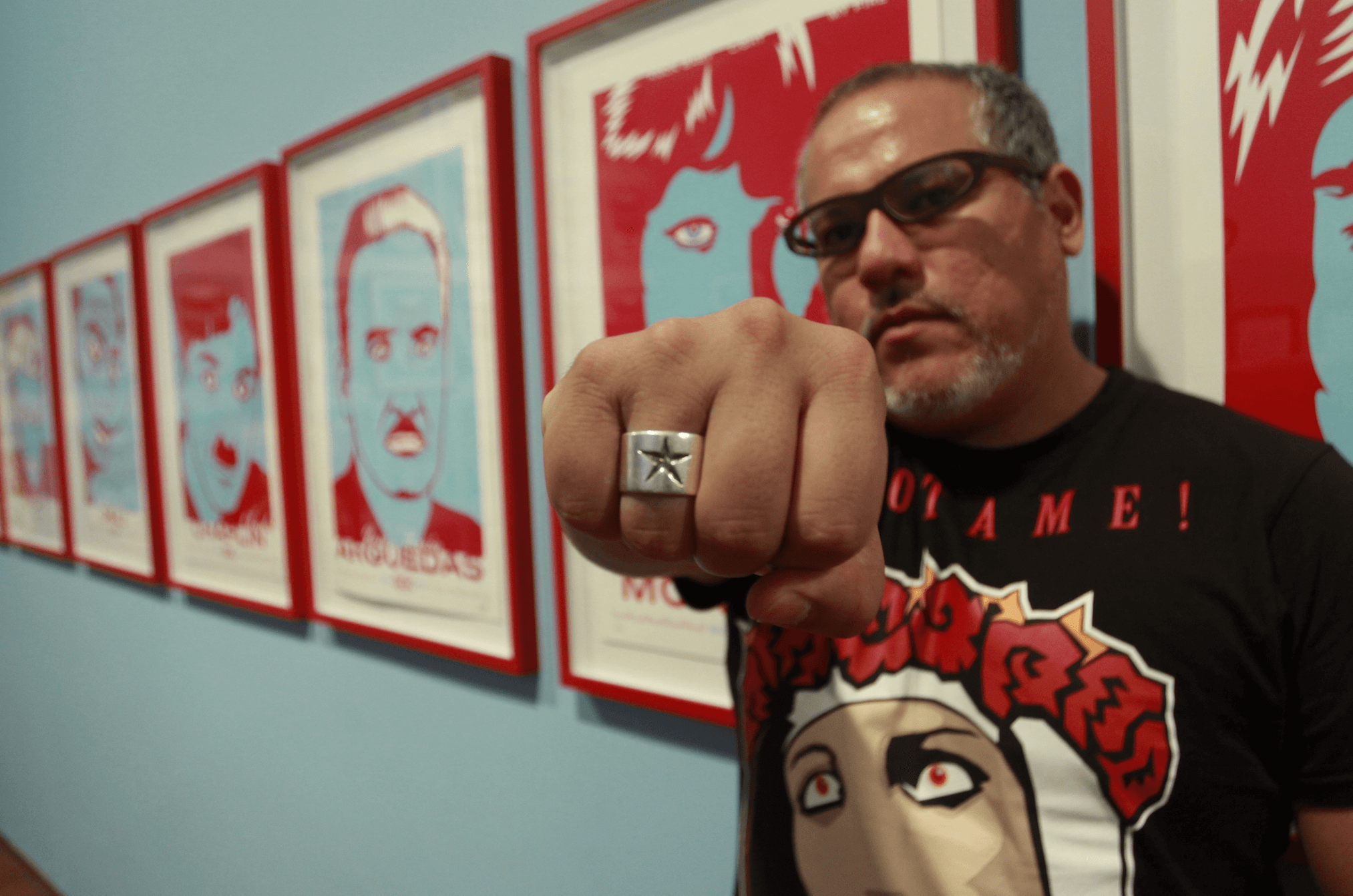
Graphic artist CHERMAN
We recently caught up with Lima-based graphic artist and musician, Cherman, to discuss the exciting trajectory of his life and career. Excerpts from the interview follow.
Graphic artist CHERMAN
BC: Thanks for taking time for us today, Cherman. We are really big fans of your work. Would you tell us a bit about your background and art education?
CHERMAN: I never finished art school, but I had something clear in mind: soccer, comics, and drawing were always going to be part of my life. I was born in 1969 in Lima, Perú. My childhood was full of comics, cartoons, and education, which exposed and drew me to the world of art and creativity. I was lucky to grow up in a hardworking, middle-class family, who encouraged artistic outlets. They would always take my oldest brother and I to museums, summer art workshops, sport events, and other fun activities. I remember once, my aunt took me to a drawing contest near our district where I was awarded for the most original art piece. In reality, at that time I would have wanted to get awarded the Soccer World Championship Cup.

A young Cherman with his family in Peru
In the early 90’s, I started working for one of the most prestigious graphic companies in Lima, where I worked as part of the printing crew. Here I learned various printing techniques, which led me to start my first graphic company called, Mher Licht. In 1998, I published one of the greatest underground fanzines (magazines made by fans) called, Crash, Boom, Zap. This magazine made history because of its unique, non-traditional format, which included publications from all the underground art movements not normally seen in mainstream news. During this time, most of my work was for free, designed mostly for the cultural scene. I worked with some of the best photographers, musicians, dancers, performers, bands, actors, writers, and athletes. Only some paid, and very little, which I used to survive pursuing my art.
I also delved into the musical world myself. I’ve been in several bands throughout my life, playing guitar, singing, and composing music. My first band was called Los Imposibles (The Impossibles). Then I played in a power trio called 8 CC (8 Cylinders), where we made “incidental” music for performance and video art for three years. I’ve also played in another amazing power trio called Sayonara and in a Peruvian folk band called, La Patrulla del Alma (The Soul Patrol). Throughout this time, I also played solo for several artistic presentations. The last band I played in was called, Las Zanahorias Rayadas (The Shredded Carrots). “Rayadas” is also slang for crazy in Spanish.
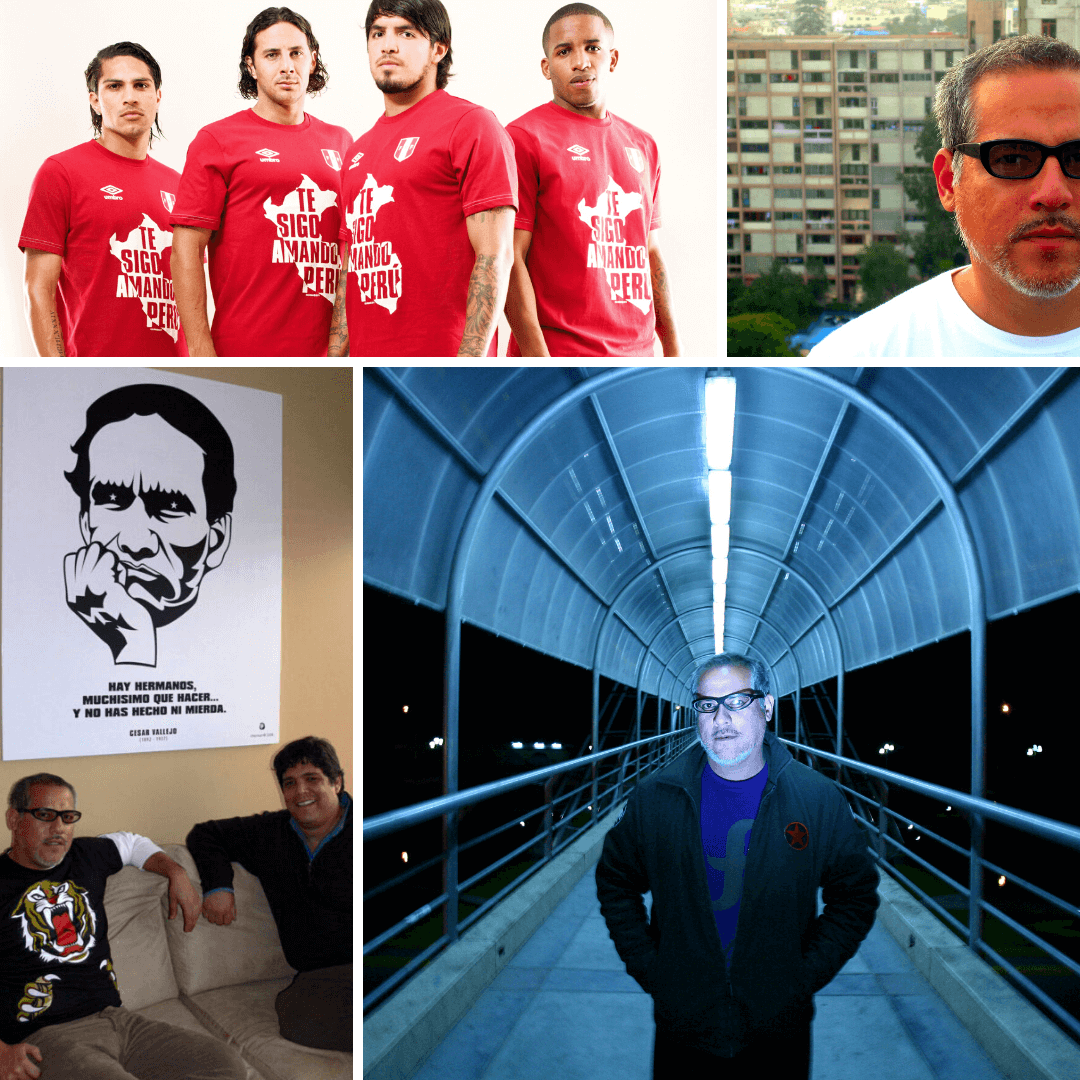
BC: Can you tell us about the fanzines you have created in Peru?
CHERMAN: From a young age, I knew I wanted to make some kind of comic publication. I grew up with many social ideals (not the political ones, just the human ones), and I’m always thinking of who needs these outlets the most. Back in 1992, during the golden age of the underground art movement, I was looking to create something that was collective and popular, with not much money. This is why I decided to learn how to design and print my own creations. In 1998, I created the “pentafoliar” fanzine titled Crash, Boom, Zap. This layout consists of one large piece split into five pieces plus a middle page, which becomes a 10 ½ page comic featuring pieces from the video, music, and art scene. It was a contribution of comic makers, bands, filmmakers, dancers, poets, and skaters. This fanzine was completely free and was distributed by hand in bars, concerts, independent fairs, and major universities. Crash, Boom, Zap, became a favorite. We were the fanzine.
After that, I created a second fanzine called Tumay. I made a few more editions of each fanzine but haven’t made one in a while. I do have enough materials to make more and I hope to get back to them some time soon. While I don’t make any physical fanzines, I am always publishing several graphics on my Instagram @cherman69. I’m the same guy as always, just through a different platform.

Art by Peruvian artist, CHERMAN
BC: When did you begin your professional career as an artist?
CHERMAN: My first official “mainstream” art show was in 2008 and was called “Peruvian Super Heroes”. I made 12 silk screen collection pieces (70 x 50 cm), which displayed a discussion about national identity, starring characters that died for our land. It included two additional pieces starring non-Peruvian characters, Simon Bolivar and Che Guevara.
With all that enthusiasm, I created another show at The French Alliance Cultural Center, called Peruvian & International Heavy Weights. The purpose of this show was to showcase my cultural identity on the same level of other more known identities. For instance, I don’t need to compare Edith Piaf with Yma Sumac; talent and art should not be a competition, but I just don’t get why we don’t showcase our local people as idols on a larger spectrum. This became a controversial event. I had the “audacity” of making this comparison, which didn’t sit correctly with some of the general public. This cost me the front-page in Perú’s biggest and most prestigious newspaper. Regardless of all the controversy, this show was selected as one of the best individual art exhibitions of the year by the experts. I then got a call from one of the most prestigious galleries in Peru, Lucia de la Puente, to be their exclusive artist.
Since then, I’ve done several expositions and participated in many social events in Lima.
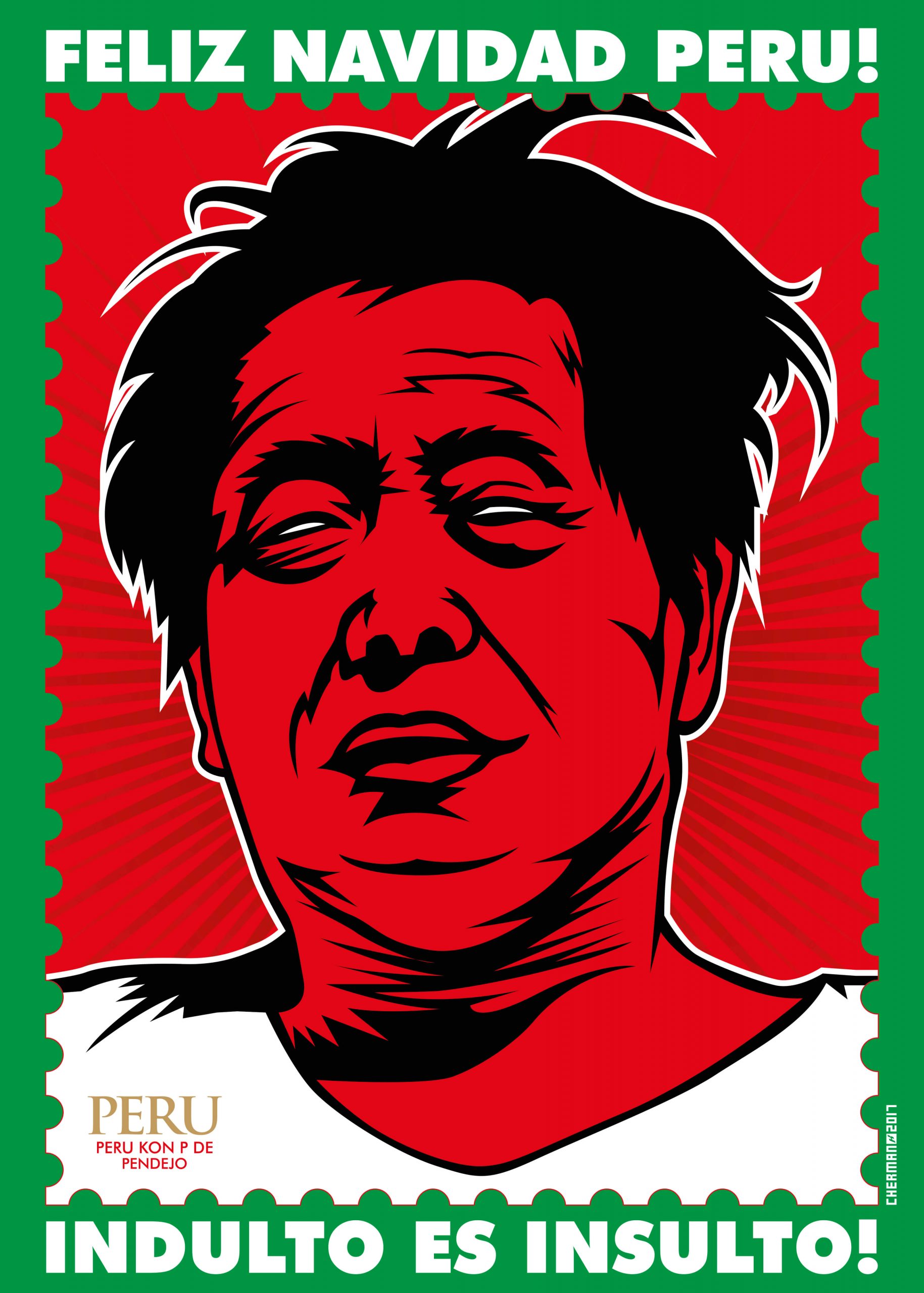
Graphic art by CHERMAN
BC: How have you dealt with the fame and the responsibilities of owning your own business?
CHERMAN: My father always taught me to be independent. I’m guessing he wanted a better future for me. So, I’ve always strived to be an independent artist. It took a long time for my family to understand what I was doing and who I was. They didn’t always agree. When in 1994, the biggest Peruvian newspaper made a note about me, about “Cherman”, my father strongly disapproved. He wrote me a 2-page letter letting me know how upset he was because I wasn’t honoring my last name, not even my first name, I was just “Cherman”. I moved out, disconnected from them for some time, and as I said, it took many years for them to finally understand who I was. I think the more they saw my art displayed and featured in different media channels the more they accepted it. I learned from my father how to build a company and with that I opened my own studio and later on my own store, Made In Chermany Inks, which has been on the market for more than 10 years. I am always trying to grow as an artist, but I can’t deny that sometimes it is overwhelming and I feel like moving to a remote island, at least for a while, and becoming a surfer.
BC: How has living in Peru shaped your art and the way you approach your subject matter?
CHERMAN: I am so proud of being Peruvian. If you analyze my art, you’ll see that most of it involves Peruvian culture. That is thanks to everything I learned growing up in Perú and going to school there. This inspiration also comes from having a very unique Peruvian family; growing up in a traditional middle-class neighborhood, “Residencial San Felipe”, which I also considered an architectural jewel. I think your experiences give you a unique vision of life, which makes all of us unique, the only difference is we all focus on a specific path or passion. In my case, soccer, comics, and especially drawing have been life tools that never abandoned me. Art is just in my veins and it has to do with everything I do. My art comes from a mix of so many things. My bad days, my good days, my creative days, my lonely days. Everything I’ve done has made me the person I am today, and each day I am searching, producing art, and just living. There is art in everything you do and affects how you feel; it’s in my heart.
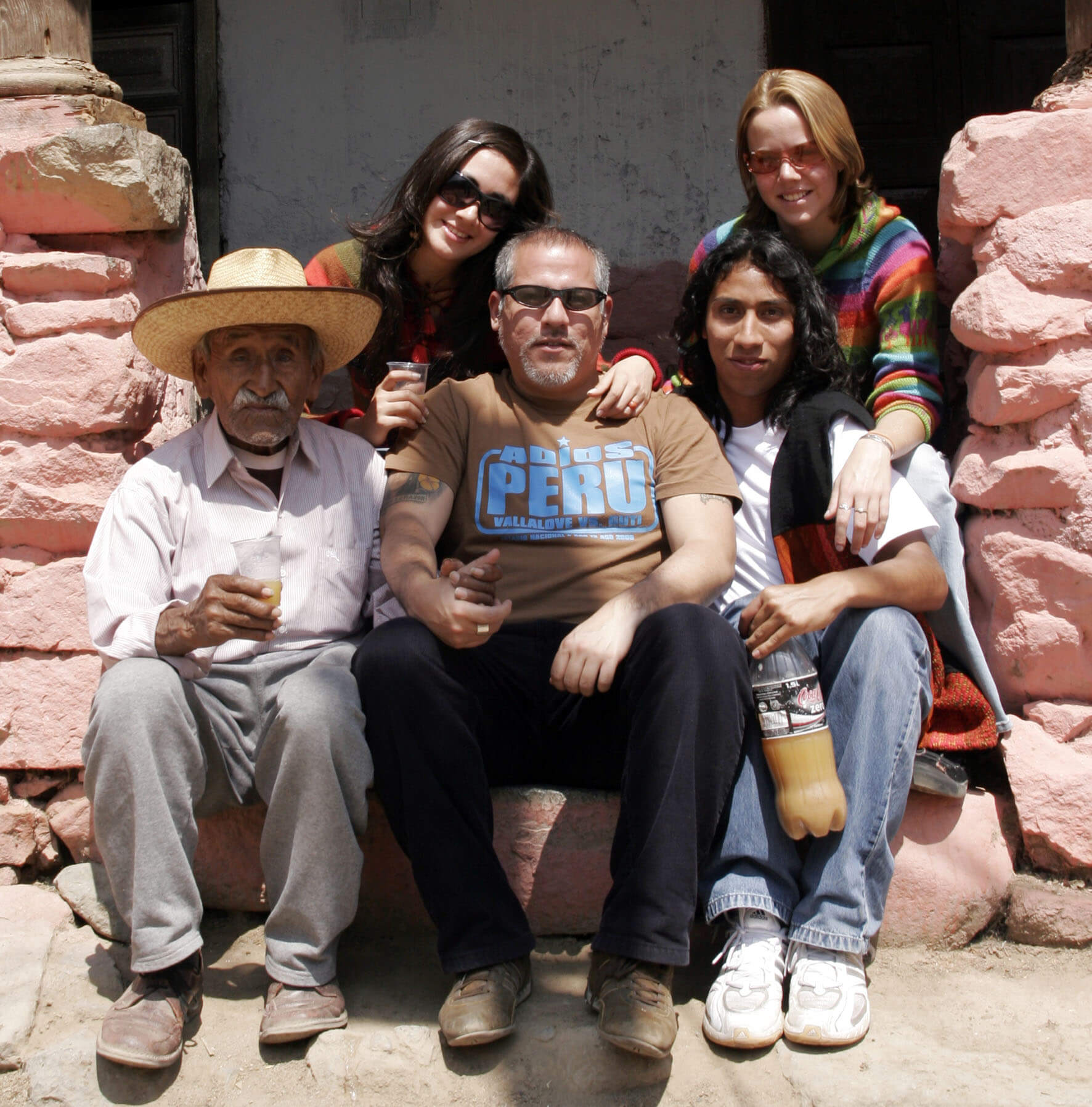
Artist CHERMAN
BC: What inspires you?
CHERMAN: Life experiences. Getting older, learning, and trying to be better in all that I do. I always wonder how I can leave a grain of something to the newer generation that is surrounded by so much technology.
I definitely cannot live without comics or books. When something catches my attention, I follow it and create some sort of drawing, illustration, or design of it. It doesn’t matter what it is. If it’s stuck in my head, I’ll start creating. I also love studying history and good films, especially documentaries. I love films based on real events.
BC: Can you describe your “process” from that initial concept to the final work?
CHERMAN: For years, the first thing I did when I woke up was to drink coffee and read the newspaper. I picked headlines or images that impressed me from the daily news as inspiration to create stories or drawings that I then developed.
I draw every day. I actually make several drawings a day, and during the day, I think of them, analyze them, look for inspiration, and then at the end of the day I decide which ones I am going to finish up.
What I’ve learned is that for making graphics, designs, paints, drawings, silk screens or just looking for something new, you not only need technology, you mainly need passion. Let yourself go, let yourself be a child, make mistakes and learn from them. Mistakes are a very important part of the creative process.
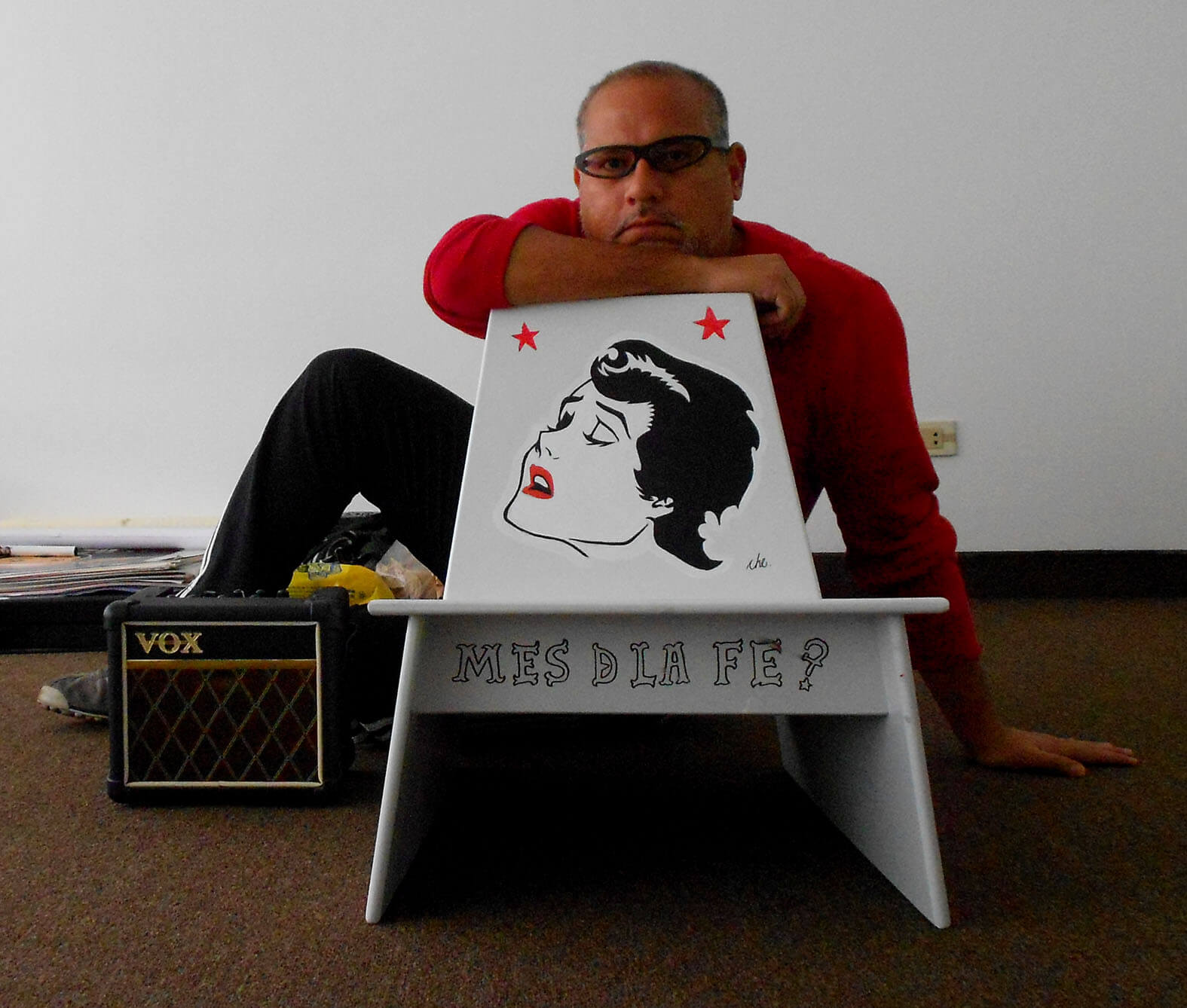
Peruvian graphic artist, CHERMAN
BC: What materials do you work with most often?
CHERMAN: I have the basic instinct to draw daily, which I love. And to do that, I go with whatever I have at hand. I work with different types of materials. In 1992, I made my first personal hardcover drawing with 290-grams paper. I always try to use my favorite fountain pen, and the trick is that the paper must resist the pen and ink.
When I have time to make an original drawing, I use a mix of black acrylics plus rotring ink. If I use canvas, I love to paint with acrylics and my black mix for the traces.
I am also a Vector illustrator, but I avoid using the tablet. I keep using the mouse only, and even though I know it is an orthodox method, I feel it helps to keep my illustrations pure, just like my drawings. My Vector illustrations are not always based on a pencil drawing, but if I decide to make one, I do need a lot more concentration. First, I trace them mentally and then I follow a pattern where only lines and curves exist. You can see the result only when it is all finished. I call it drawings of the invisible.

Artist and musician, CHERMAN
BC: You have adopted a unique writing style, substituting c and qu with the letter K. How did this begin?
CHERMAN: My entire life, I’ve dreamed of having my own komiks magazine. In 1992, I started working toward this dream, I started looking for other Komic makers to collaborate with. After some time, I published the fanzine Crash, Boom, Zap. I had to write an editorial text for it, but considering the size of the publication, there was almost no space for the editorial. So after a few editions, I realized that in Spanish we use three konsonants (c, q, k) for the same sound, so I decided to use that one letter –K, to replace the others. As a passionate graphic lover, I konsider font types and kalligraphy are also karacters and therefore important. I saw the use of the letter K as a symbol of change and started using it in all my designs and narrative. I like that I kan be recognized for it. On the other hand, there are people who don’t like it, that resist change, and that even say that I am destroying the language. What people need to realize is that language kan also change, and that we should be able to incorporate changes to our lives in the same way we incorporate tecknology to them.
BC: What is “Chermany”?
CHERMAN: I don’t know if Germán is a common name everywhere, but my father’s name is Germán and I am Germán Jr. When I was a kid, I was lucky enough to have access to graphic books imported from other countries that were not easily accessible in Perú. One day, I had a nightmare where my father took one of those books away from me, I had looked at every single detail from that book and remembered it said MADE IN GERMANY. I was impressed, I didn’t know where it came from, so I thought my father was some sort of King. Later, I learned that Germany was English for the country Alemania (Spanish). Some years later, my father went to Europe and brought me the most amazing soccer shorts I’ve ever had, I found everything about them fascinating, the packaging, the material, the smell, everything, and they also were labeled MADE IN GERMANY. To add up, I am a real fan of the brand Adidas which is also MADE IN GERMANY, so I decided to play with the words that had fascinated me since I was a kid and my name, Germán (Cherman), and named my company “MADE IN CHERMANY” which represents my own universe, a universe of comics, a universe full of passion, where any graphic is possible!
BC: Some of your pieces are political. Does your art ever cause controversy or headaches for you?
CHERMAN: Some years ago, a Canadian editor called me a “miracle” because I was able to do political comics without any limits and still live my life so peacefully. It was easier at the beginning of my career because we had little to no social media, but even now that social media is what we see the most, I have no major problems.
A magazine once offered me money not to publish a comic I had finished. They didn’t want it published, and even though I was “broke” at that time, I didn’t accept it. I wouldn’t accept not to publish anything for pressure or hidden interests. They couldn’t buy my dignity.

Artist and musician, CHERMAN
BC: Do you create custom pieces for clients?
CHERMAN: Yes! Since I was a kid, I created drawing for “clients”. People came to me and asked if I could draw them. I really never got paid for those when I was a kid, I just did it for fun and for people to enjoy my art.
In the 90s, I started making personal cards and never stopped. I was a busy hardworking graphic designer for years. I have designed several custom pieces, such as catalogues, logos, and lots of posters.
Later on, I started getting commissioned for my art through Advertising companies, I have to say from all my experiences that was the worst! Then, when I made a name for myself in the industry, other companies started hiring me as an independent artist giving me more freedom to do what I really like and enjoy doing.
I created the official jersey for the Peruvian Soccer Team for the brand Umbro. I’ve also made custom pieces for the Converse 100th Celebrations, FOX, TV channels, banks, and other organizations and individuals.
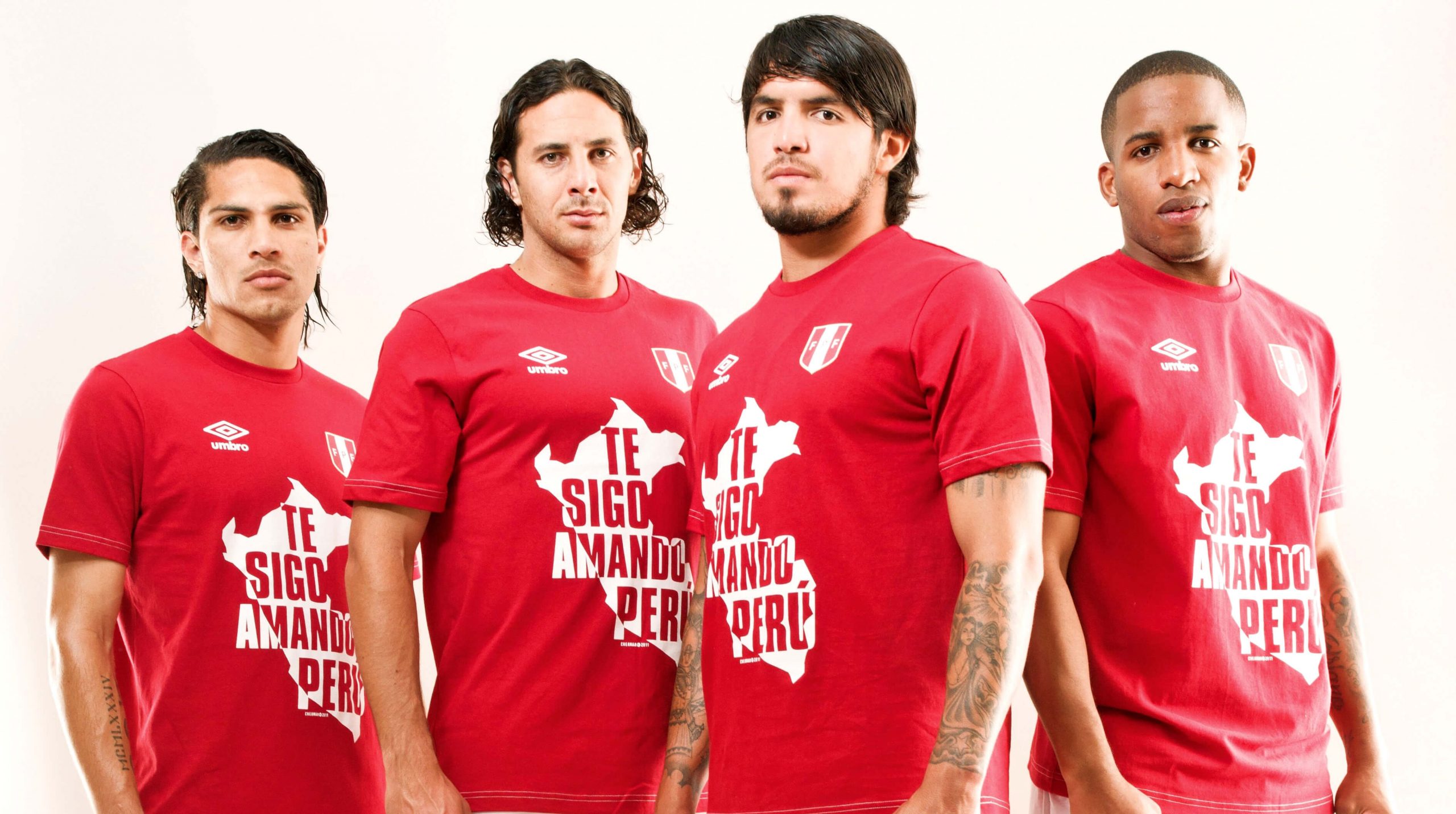
Graphic art by CHERMAN
BC: What has been your biggest challenge as an artist?
CHERMAN: Living off your own art is definitely a challenge, but also a blessing. I love the fact that you can touch people’s lives and emote feelings with your work. I believe that anything is possible through art, and if you don’t believe me, ask Walt Disney.
BC: You have mentioned how important your family has been to the formation of your career. Has anyone else helped you along the way?
CHERMAN: Most of the time, my creations and their development happen when I am alone. “Chermany” has always been my own company on the creative side. But on the business side, I have to mention my long-time administrator Maria Salazar and my assistant Juanito.
And after my experience at the Harvard Peabody Museum, I reconnected with my long-time friend Angelo Viera who invited me to move to Miami and that’s how Chermany LLC was born.
I’ve collaborated for years with the historian Henry Mitrani and with the painter Etna Velarde (RIP), who painted several Peruvian heroes.
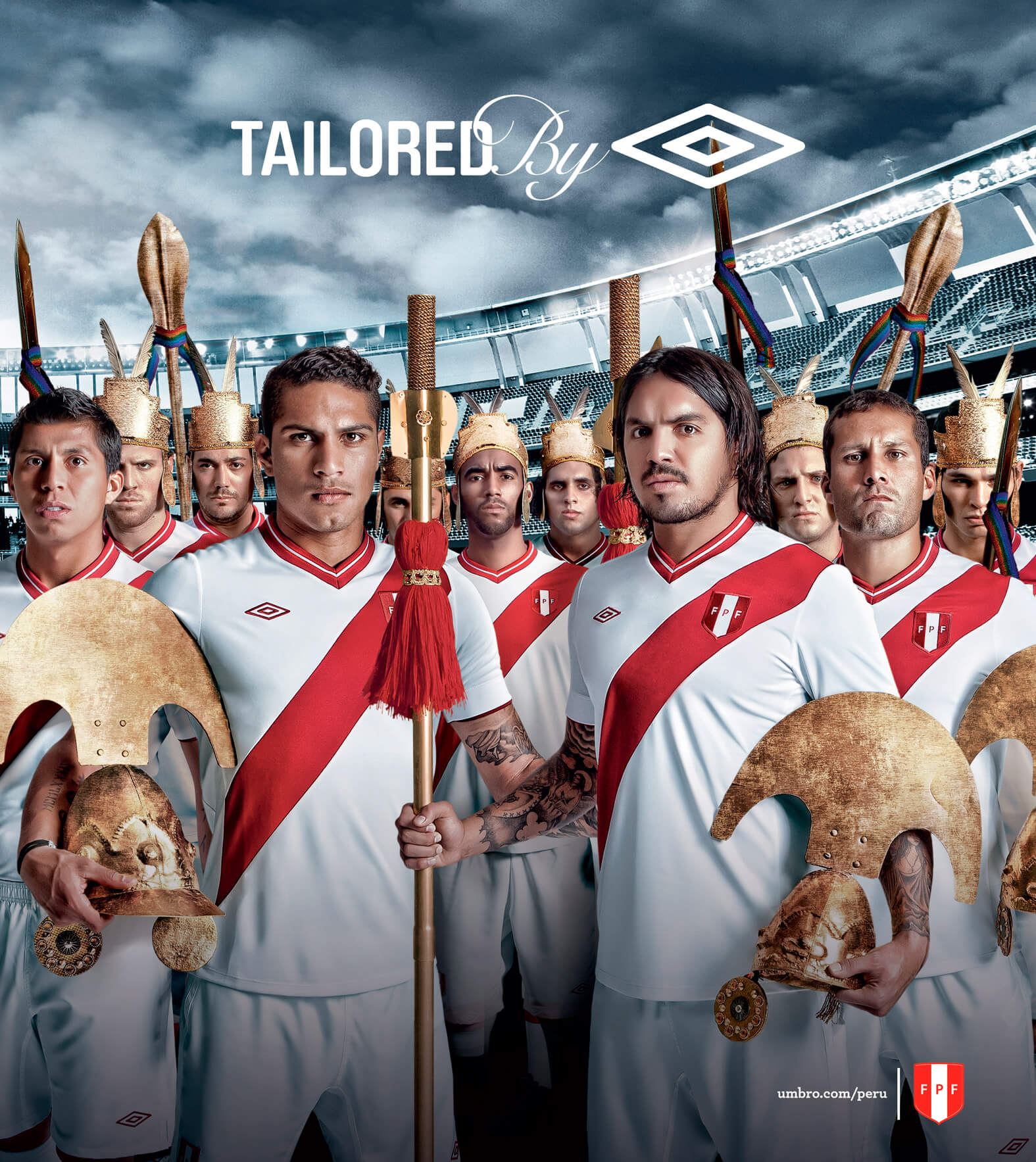
UMBRO graphic by artist CHERMAN
BC: What are some of your favorite projects—the works you’re most proud of?
CHERMAN: The first person who trusted my work was Juan Lengua. Sadly, he is no longer with us, but his restaurant “La 73” is always going to be something to be proud of. The first galleries that showcased my work such “80 mts2” and “Lucia de la Puente” which sadly closed their doors, but you can still see their pieces at Hotel B in Lima, one of the best places to stay at or just visit. And restaurants around the world have been “Chermanized”, like “San Martin” in downtown Lima, “Sudaka” in New Jersey, “Celeste” in Boston, and “Ceviche” in London.
Mr. Eduardo Holschild, one of the most important art collectors in Perú, opened his doors to my artwork and gave me good advice, like the advice my father gave me, to always be independent.
In 2009, I was selected to be part of “Design for Obama”. I received a Spike Letter inviting me to participate in the book “Obama Poster for a Change”. It was my first Taschen publication! I wish one day I can make a book with them. Feel free to click on the link below:
https://www.amazon.com/Design-Obama-Posters-Change-Grassroots/dp/3836518562
I’m also eternally thankful to Umbro for allowing me to design the official jersey for the Peruvian soccer team in 2012. That was one of the most amazing experiences in my life, even though our team did not qualify to participate in the World’s Championship Cup.
In 2013, I was selected to represent my country at the International book fair FILBO (Feria Internacional del Libro de Bogotá) in Colombia, one of the best editorial fairs in South America. And finally, in 2019, I was invited to present a lecture about my lifework at the Harvard Peabody Museum.
See link below:
https://www.peabody.harvard.edu/CHERMANY-A-PERUVIAN-GRAFIK-XPERIENZ
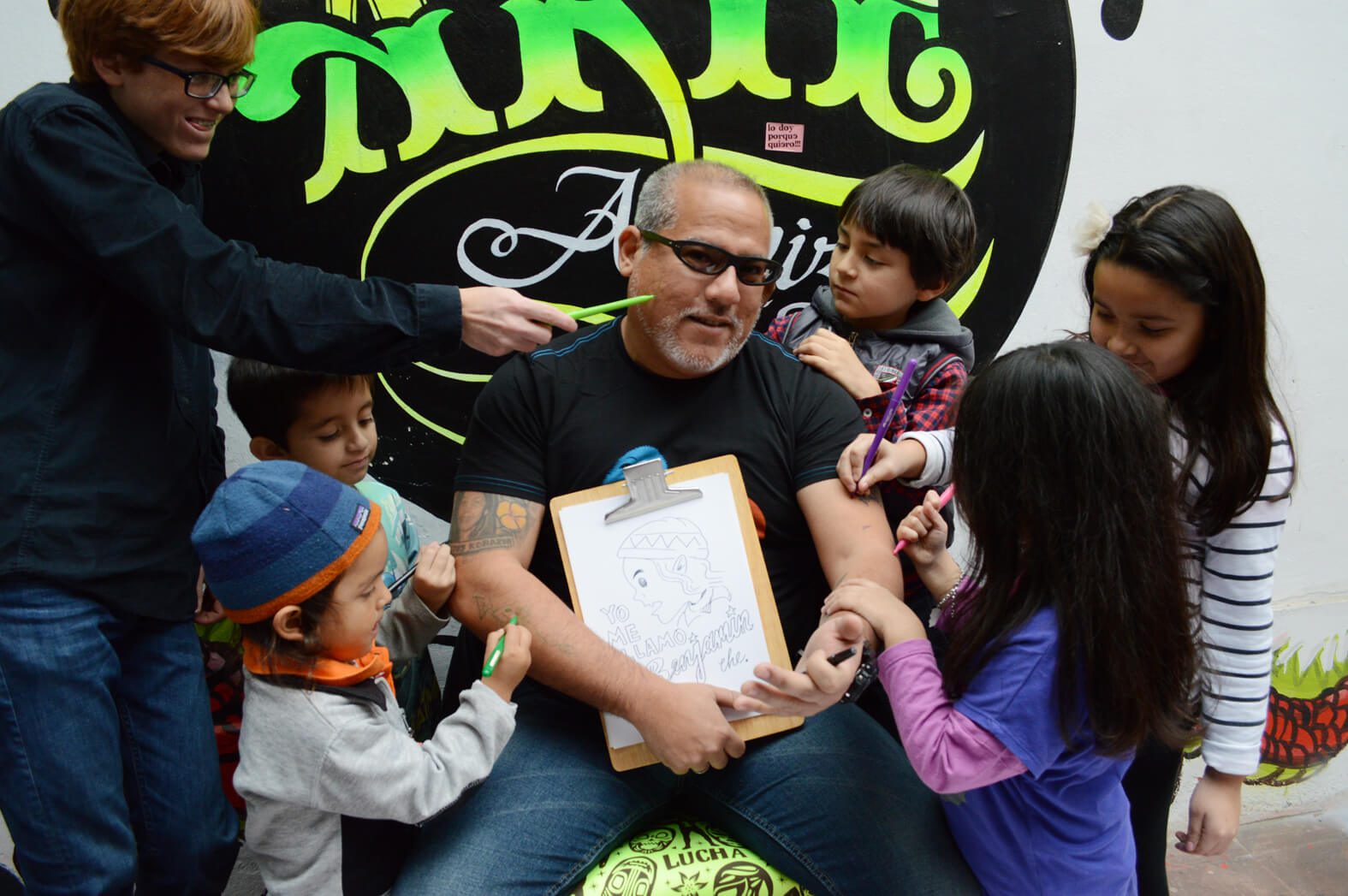
Artist CHERMAN shares work with children
BC: And finally, do you have any advice for up-and-coming artists?
CHERMAN: I’ve always offered workshops for kids. My motto is to teach them that there are no “ugly drawings”, nobody can tell you that because all drawings are unique, and that’s their beauty.
For adults, I always share my career experience with them, we can always learn from other people’s experiences. I also emphasize that when you think there’s something you cannot do, to see it from the perspective of love, what would you do for love? Love is empowering. Love yourself, love what you do, and things will become possible.
For more information about CHERMAN and his art, please visit his website and Instagram by clicking the links. You can also follow CHERMAN on FB and Twitter.
Located in Wynwood, Miami?
We invite you to contact us at our office:
310 NW 26 ST. SUITE A. MIAMI, FL 33127 | USA
P: 305-640-5005 | EMAIL: CONTACT@BRITTOCHARETTE.COM
Stay in Touch
Or you can subscribe to our Newsletter and get design inspiration, global trends, cutting-edge luxuries, and fresh ideas.
